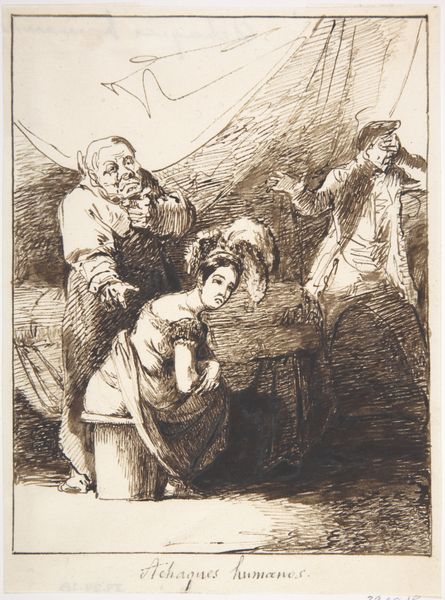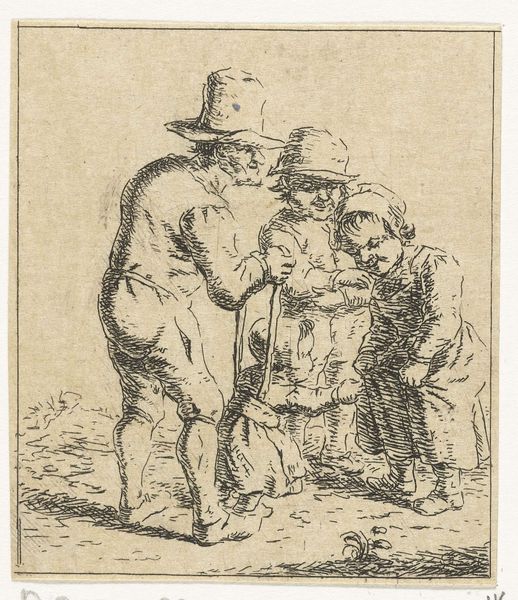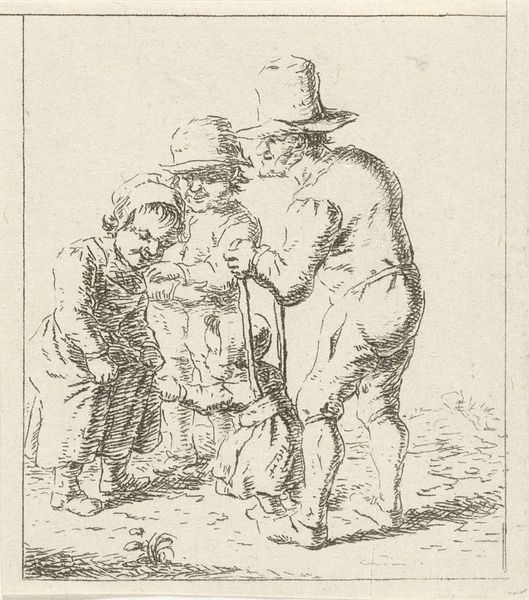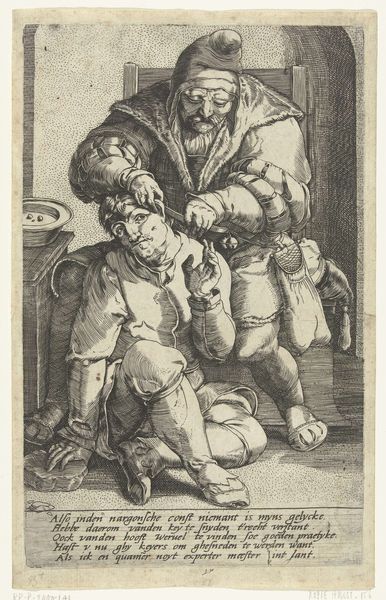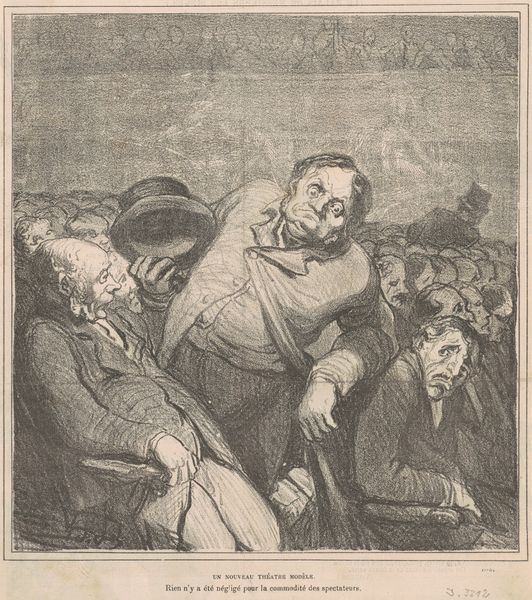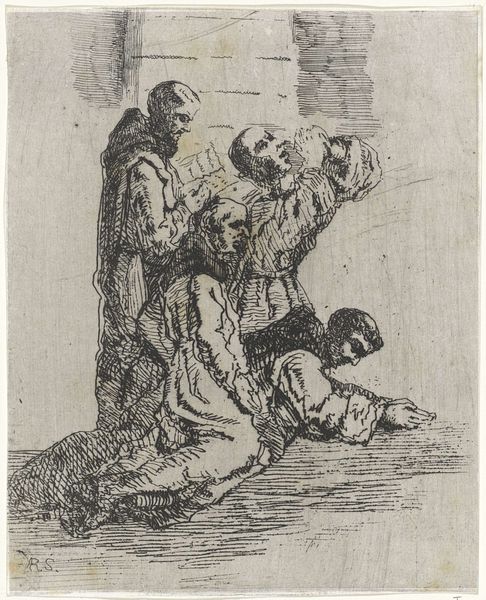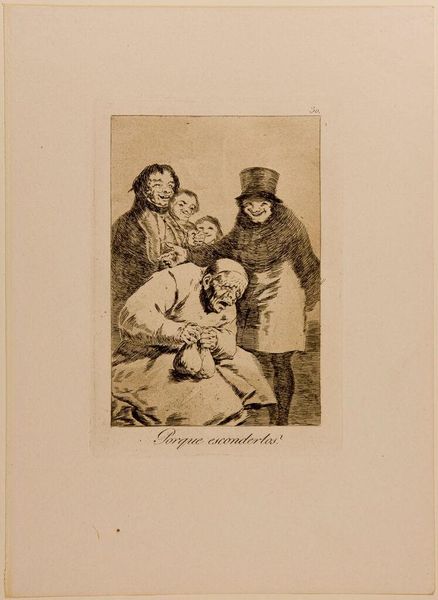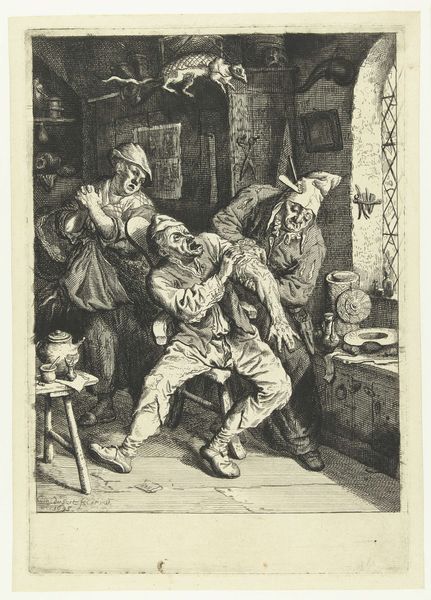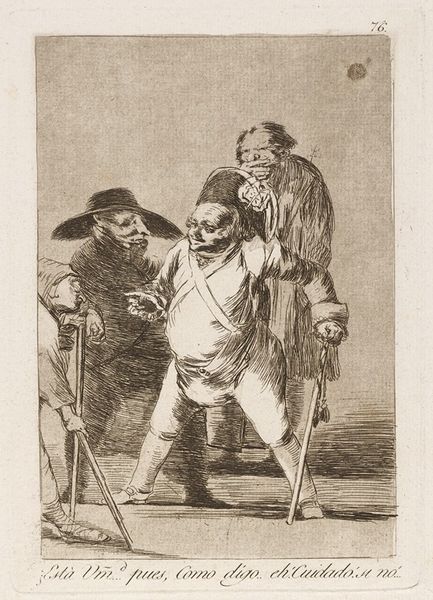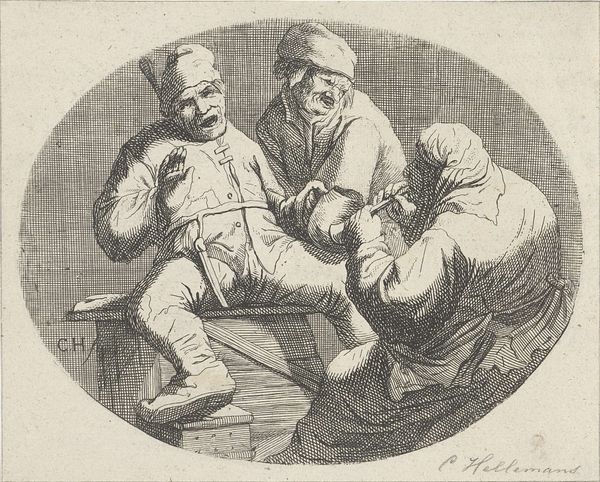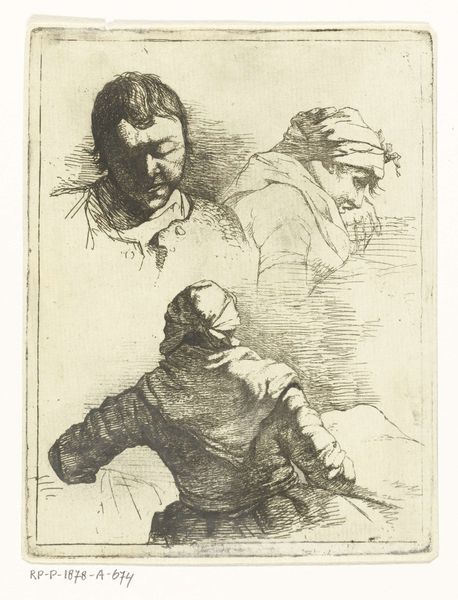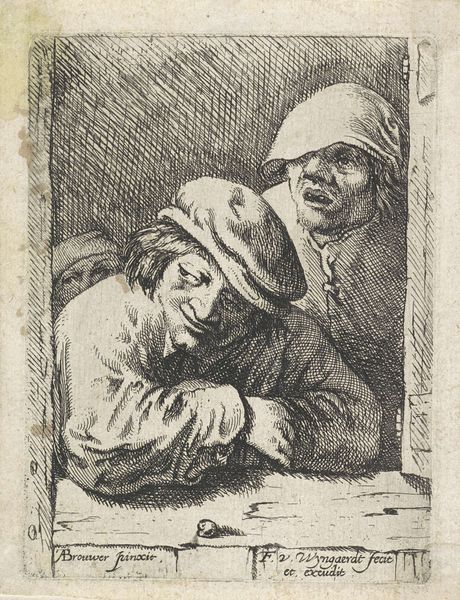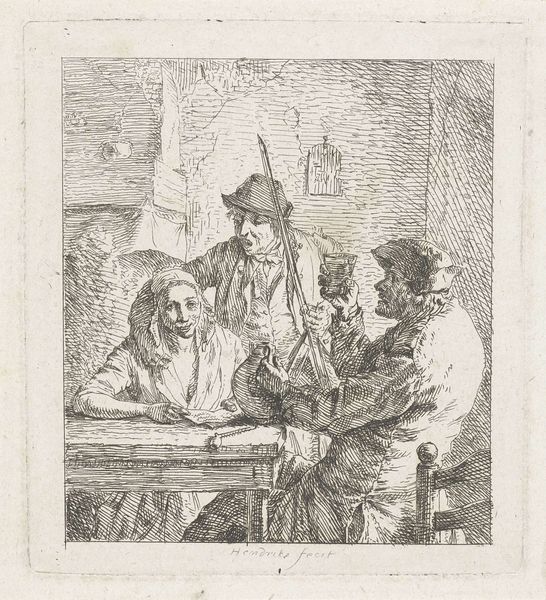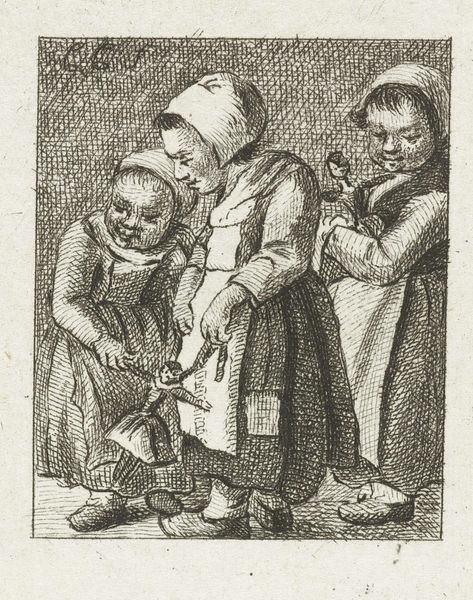
print, etching, engraving
#
portrait
#
narrative-art
# print
#
etching
#
caricature
#
old engraving style
#
figuration
#
momento-mori
#
romanticism
#
genre-painting
#
history-painting
#
academic-art
#
grotesque
#
engraving
Copyright: Public Domain: Artvee
Curator: Let's delve into Francisco de Goya’s unsettling print, “Porque esconderlos,” created between 1796 and 1797. Editor: My immediate reaction is a sense of grotesque unease. The figures looming behind the central character, their exaggerated smiles and features… it's chilling. Curator: Goya’s work, especially his prints from "Los Caprichos," functions as sharp social commentary, reflecting the tumultuous political and social landscape of late 18th-century Spain. The technique he uses here, etching, lends itself particularly well to this kind of emotionally loaded and socially critical work. Editor: The question is: who are these people? And, of course, why are they so intensely, performatively happy at this poor man’s distress? Is this a commentary on power and wealth? The Church, perhaps, squeezing the common person? Curator: Exactly. Consider the historical context. The Church held immense power and wealth, and was often seen as exploitative. I read this work as Goya capturing that tension, those power dynamics that would often remain unseen. Editor: The old man clutching those bags… It’s heartbreaking. His desperate grip, those deeply etched lines in his face illustrating his anxiety. But even his struggle, Goya suggests, is performed for an audience. I think the choice to make it a print enhances this sense of mass complicity. Curator: The grotesque nature of those ‘smiling’ figures also functions to de-legitimize their power, to visually expose their moral corruption. He questions not just these figures, but the whole social structure that facilitates their power. It reflects the Enlightenment ideals Goya, and other Spaniards, grappled with. Editor: And the title, “Porque esconderlos,” is dripping with irony, almost accusatory. Why hide them, indeed? The question seems directed not just at the old man, but at the whole of Spanish society that allows this suffering to perpetuate in shadow. Curator: Indeed, this isn't just about portraying a scene, it's about indicting a system, forcing a confrontation with uncomfortable truths about how power operates. Editor: The lasting resonance is undeniable. This forces us to interrogate systems of power, social responsibility, and the ethics of representation. Curator: Absolutely. A dark mirror held up to society.
Comments
No comments
Be the first to comment and join the conversation on the ultimate creative platform.
